

Matt Campbell
2025 Porsche 911 Carrera T review
5 Days Ago
The retro-styled ID. Buzz won’t land in Australia until 2024 or 2025, and two-thirds of its 2022 production run is sold out in Europe – is it worth the hype?
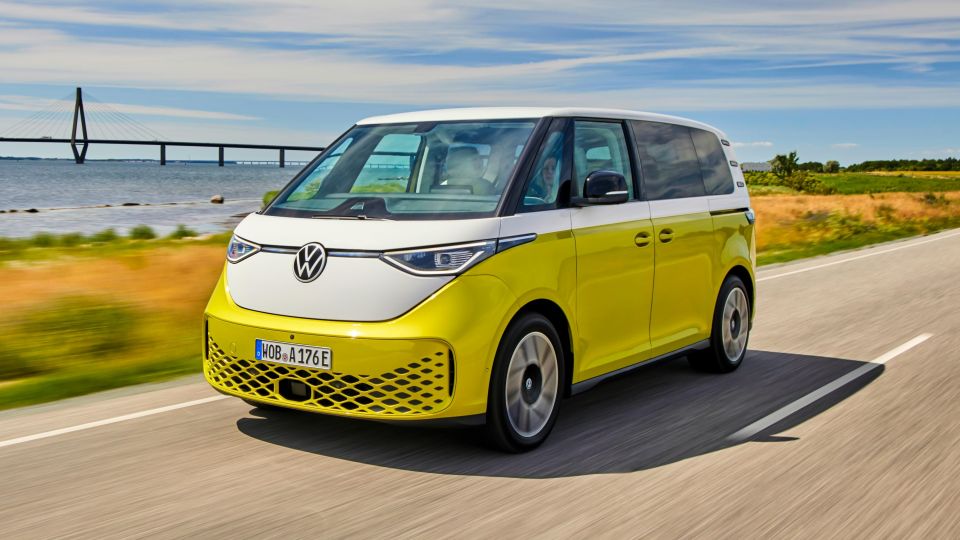
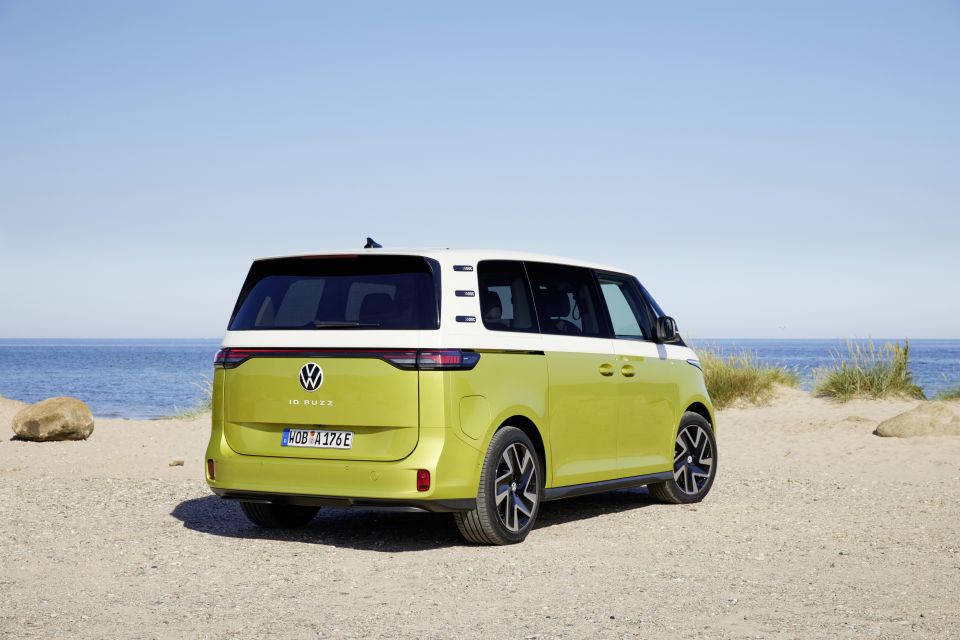

Where expert car reviews meet expert car buying – CarExpert gives you trusted advice, personalised service and real savings on your next new car.
The waiting, as the old song goes, is the hardest part.
Volkswagen has been teasing us with reimaginations of its iconic mid-century Microbus for more than 20 years, but now the long and tortuous gestation that started with the Microbus Concept unveiled at the 2001 Detroit Motor Show is over.
The Microbus-inspired, electric-powered Volkswagen ID. Buzz has just hit the road in Europe, and it’s already a runaway hit, with two-thirds of this year’s production already sold out.
That’s the good news. The bad news is that Volkswagen has yet to confirm exactly when the ID. Buzz will go on sale in Australia.
Local execs say the earliest we can expect to see the ID. Buzz and its commercial cousin, the ID. Buzz Cargo in Australia, is late 2024.

With its Australian launch at least two years away, and no other Volkswagen EVs on sale here to use as a benchmark, the best we can do is some informed guesswork as to how much the ID. Buzz is likely to cost when it arrives.
In the UK the ID. Buzz’s starting price is just 3.2 per cent above that of a base Touareg 170TDI. That suggests an Australian base price of between $95,000 and $100,000.
Our well-equipped test cars were all equivalent to the U.K. market ID. Buzz Style, which retails for 8.4 per cent more than the base model.

Given Volkswagen’s soon-to-be-superseded T6.1 Multivan starts at $72,343 for the entry-level Comfortline model, and stretches to $100,588 for the lavishly equipped Highline, that seems a logical price window given the ID. Buzz is a minivan with much more street appeal, especially for buyers in urban areas.
The commercial ID. Buzz Cargo, which has 3900 litres of load space behind an internal bulkhead between the B-pillars instead of rear seats and is also on Volkswagen Australia’s wishlist, costs about 18 per cent less than the people-moving Buzz in the UK.
If local pricing follows suit, the Buzz Cargo should retail between $79,000 and $83,000.
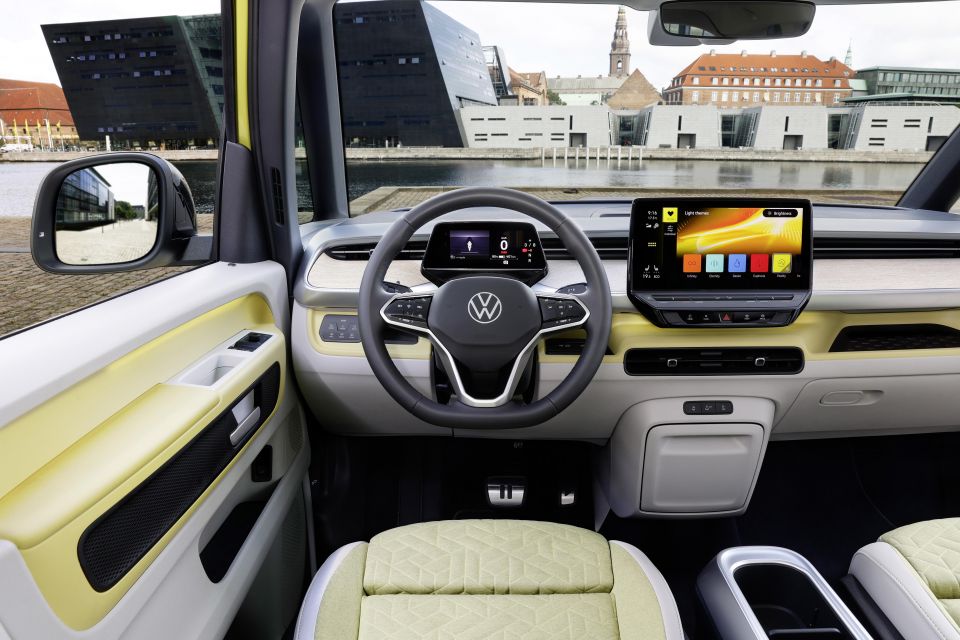
Though it shares a lot of hardware with the ID.4 SUV – most notably the digital instrument panel, the 10-inch central touch screen, the steering wheel, and other switchgear – the airy Buzz interior looks more upscale than that of any other MEB Volkswagen, though there’s still too much hard plastic evident, most notably on the door trims.
Not all the plastic in the Buzz cabin is bad, however; some of the seat trim, floor coverings and roof lining are all made from recycled plastics. What looks like leather is synthetic vegan material.
While the Buzz Cargo offers three-abreast seating in the front, the people-carrying Buzz is a five-seater.
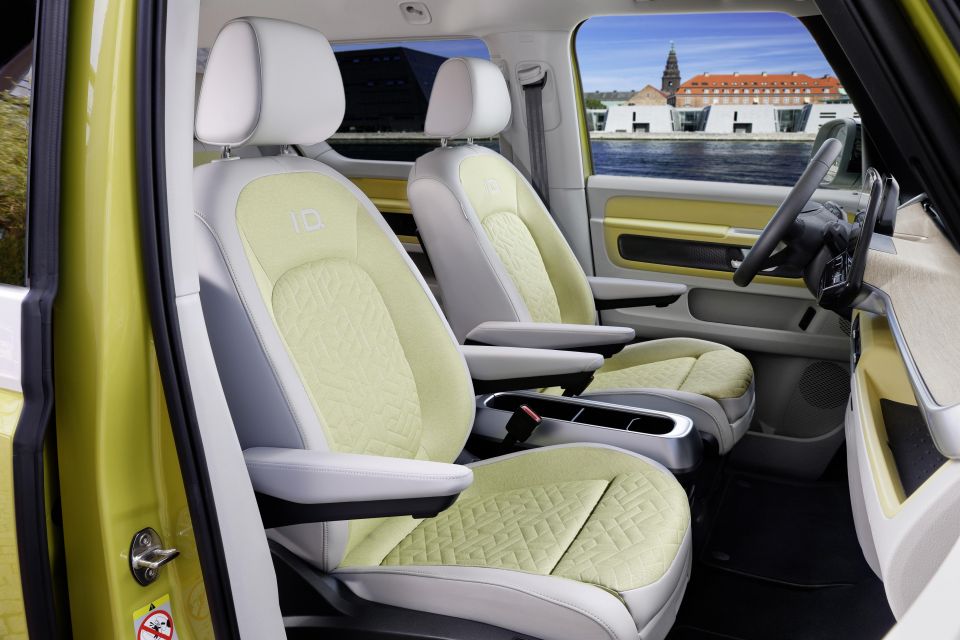
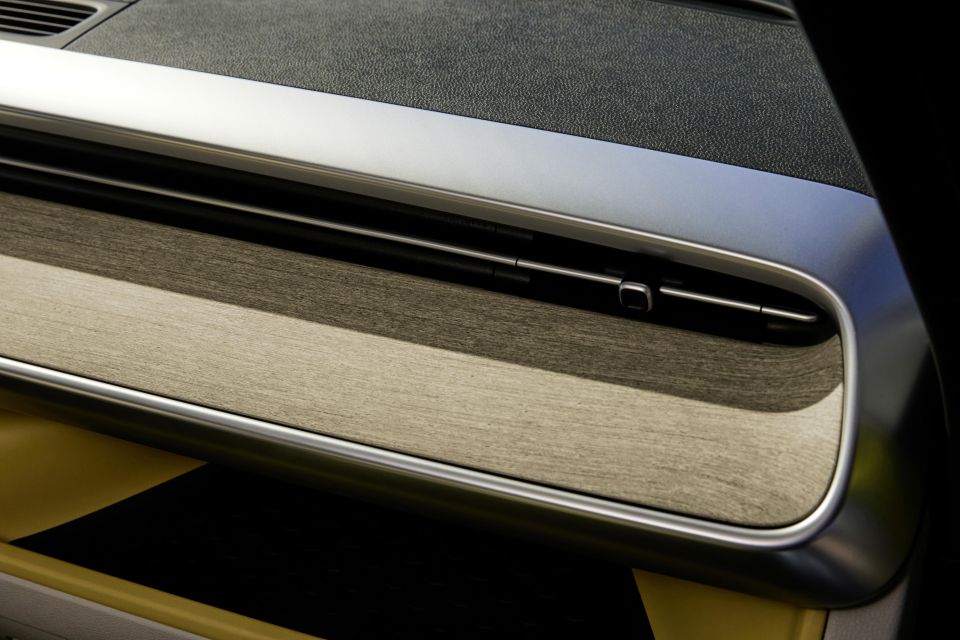
With an overall length of 4712mm and a wheelbase of 2989mm, the Buzz is the biggest vehicle yet built on the MEB architecture. The wheelbase is the same as that of the T6.1 Multivan, but the ID. Buzz is 81mm wider, boosting interior room.
A bigger version of the ID. Buzz, with a wheelbase stretched by up to 300mm to allow for a third row of seating and accommodation for six or seven passengers, will be available by 2024.
Power sliding rear doors are available as an option, and each contains a USB-C port, as does the passenger side front door.
Two more USB-C ports are in the dash, just to the right of the steering column. The windows in the rear doors are fixed, but power sliding windows are planned and may be available by the time the Buzz arrives in Australia.
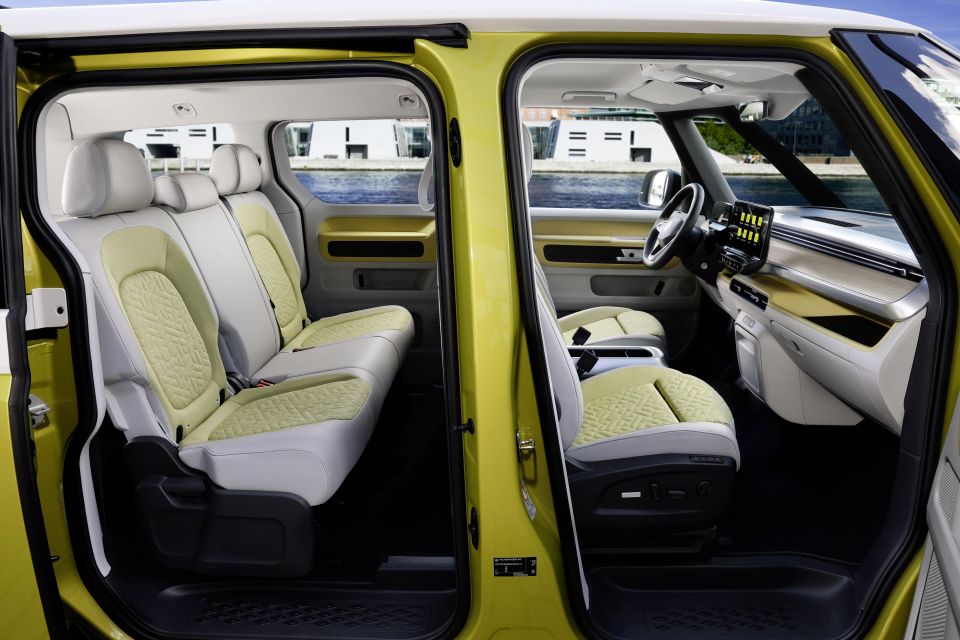
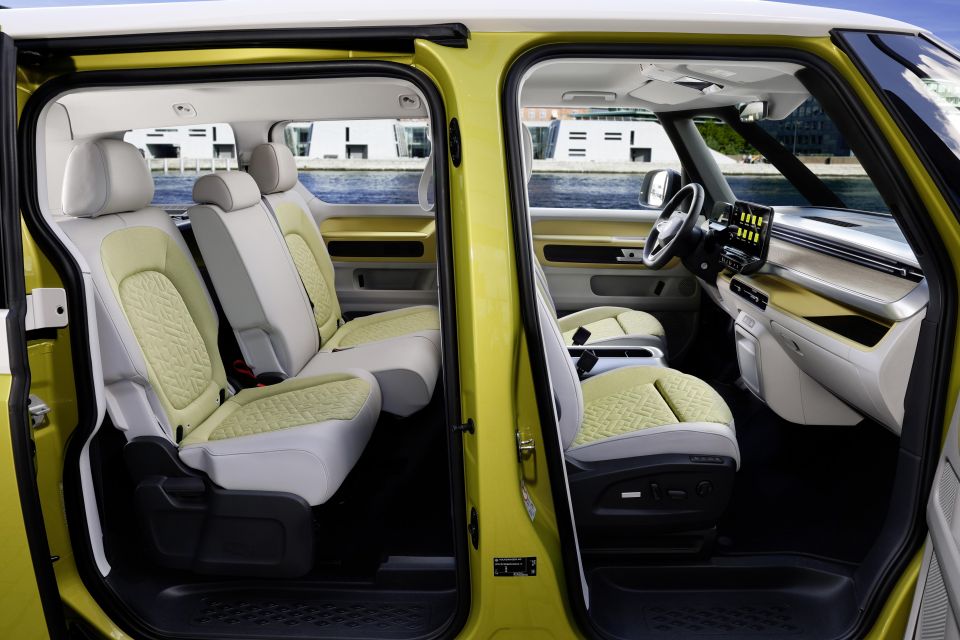
The second-row seat is split 60/40 and slides fore and aft 150mm. The seat folds flat, though not flush with the load space floor.
Instead, Volkswagen offers an optional storage unit that sits on top of the floor and has a top surface that aligns perfectly with the seat backs when folded.
Other clever touches include the optional centre console that includes a cubby with removable dividers, one of which has an in-built bottle opener, and the other of which can be used to scrap ice off the windshield.
The console includes a slide out drawer at the rear, and a flip-out storage bin at the front, and can be unclipped from the floor and removed from the car entirely.

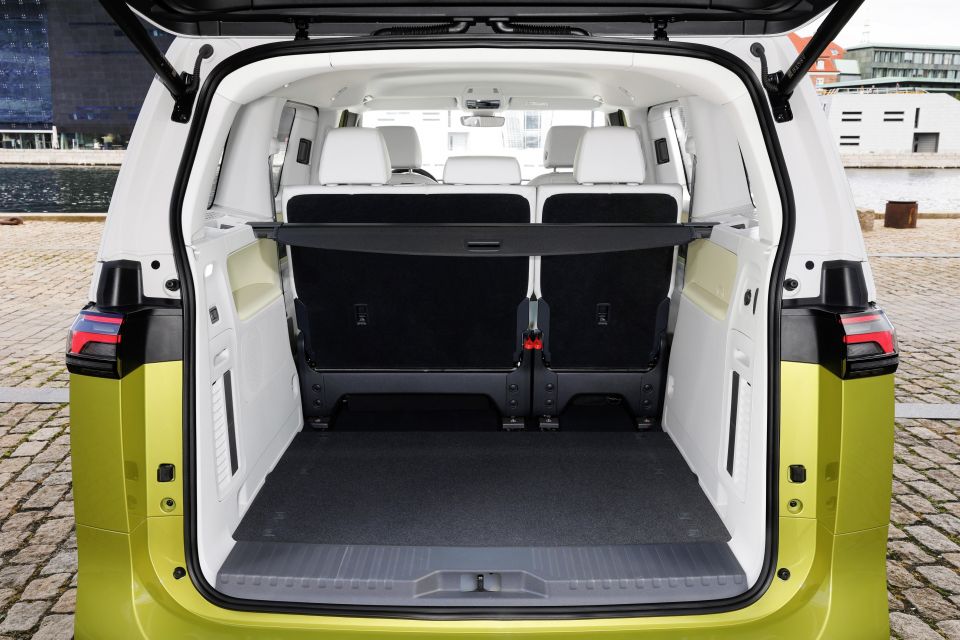
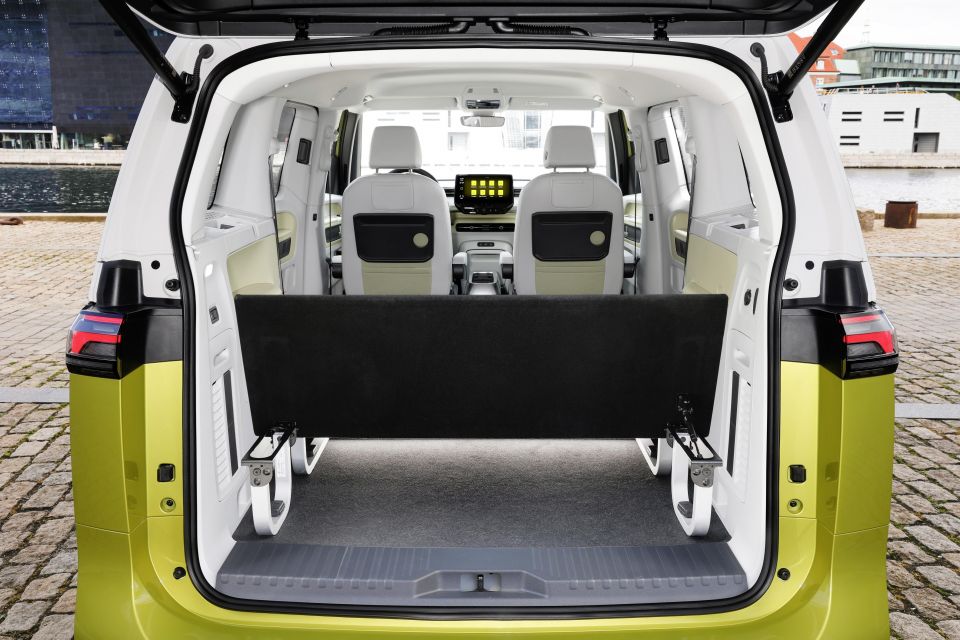
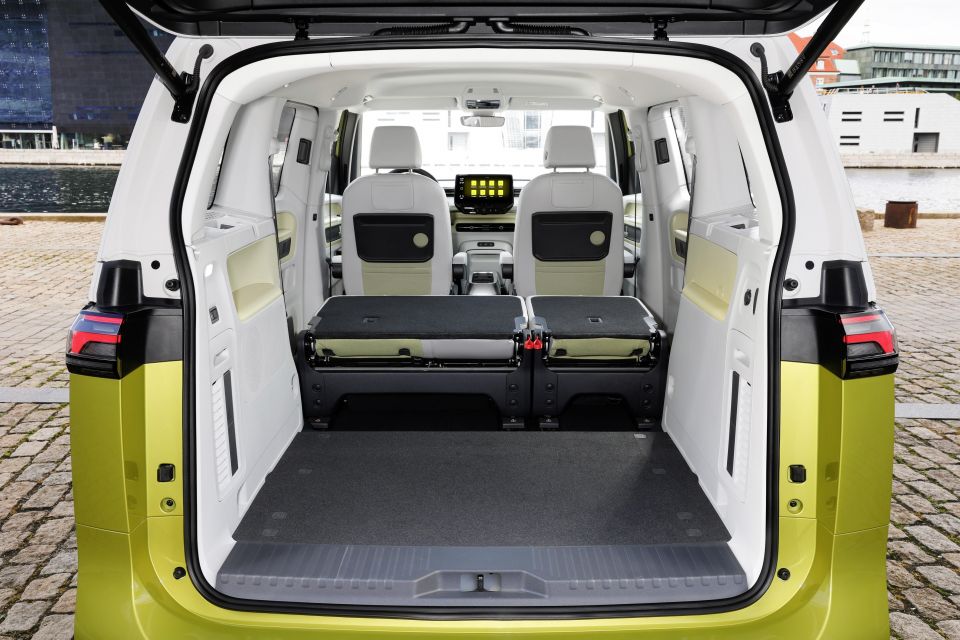
The rear hatch reveals an opening 1275mm wide and 1096mm high, and a load space that varies from 1121 litres to 2205 litres with the second road folded flat.
The load lip is just 632mm above the ground. Volkswagen has done an impressive job of packaging the rear e-motor underneath the load space floor.
Volkswagen claims the Buzz has a maximum load capacity of 529kg, while the Buzz Cargo will carry 648kg. Both vehicles will tow 1000kg.
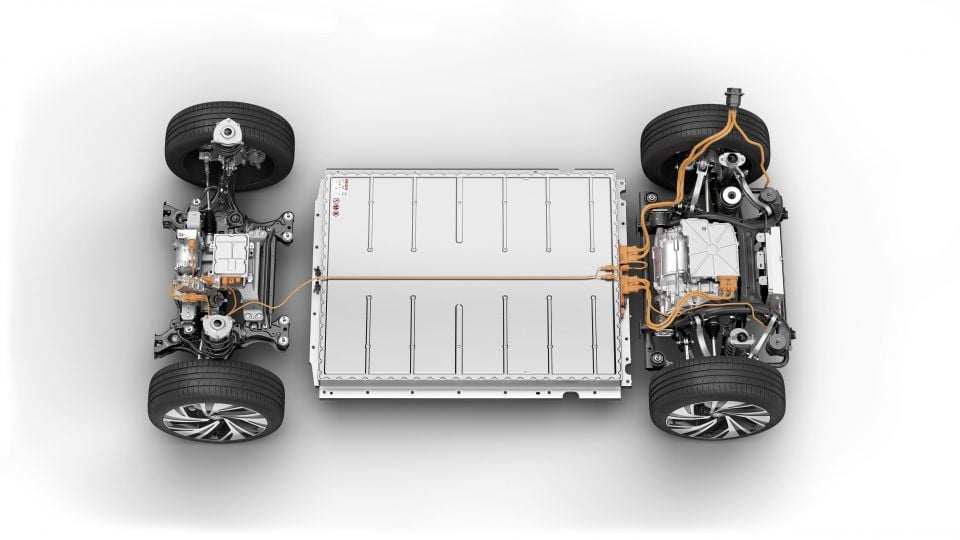
The ID. Buzz is built on Volkswagen Group’s MEB electric vehicle architecture, which means it shares a lot of its powertrain hardware with other Volkswagen ID. models.
Launch models are all rear-wheel drive only, powered by the same rear-mounted 150kW/310Nm e-motor and 77kWh (net) battery pack found in the ID.4 Pro Performance SUV in European and North American markets.
All-wheel drive models with an additional e-motor driving the front wheels and system outputs of 220kW and 460Nm are in the pipeline and will be available by the time the Buzz arrives in Australia.
Volkswagen claims the standard wheelbase, single motor ID. Buzz has an energy consumption rate of 21.7-20.5kWh/100km on the WLTP cycle, which equates to a range of between 402km and 423km.
A software upgrade enables the Buzz’s battery to accept a charge of up to 170kW, a big step up from the 125kW maximum on other Volkswagen EVs. That means it can be taken from a 5 per cent charge to 80 per cent in just 30 minutes.

It might be the biggest electric Volkswagen yet, but the ID. Buzz feels surprisingly wieldy around town.
The 310Nm of torque available from zero rpm ensures quick acceleration away from the traffic lights. The low-speed ride is compliant – the best of the MEB vehicles we’ve driven so far – and the steering light and accurate.
On paper the 3.4 turns lock-to-lock suggests the steering is somewhat low-geared. It’s not; that lock-to-lock number is a function of the wide arc through which the front wheels pivot, delivering a turning circle of just 11.1 metres.
Our test car rolled on 20-inch wheels (18s, 19s, and 21s are also available) fitted with 235/50 Continental Eco Contact 6Q tires up front and 265/45 items at the rear.

The bigger rear tires aid traction and load carrying, say Volkswagen engineers, which the smaller fronts allow the steering angles that enable the ID. Buzz’s impressive turning circle.
The ID. Buzz bowls comfortably along at freeway speeds. The rolling ride is good, and while there’s a definite rustle of wind past the A-pillars, overall noise levels are relatively low.
But without any mechanical noises from an internal combustion engine or a transmission to run interference, different road surfaces elicited a variety of hums and roars from the Continentals on our test car.
The low centre of gravity, combined with dampers that deliver good body control and a new multi-link rear axle with a lower roll centre, help the ID. Buzz feel composed on a winding road. Despite the relatively high seating position, head toss is commendably low, increasing passenger comfort.
The boxy Buzz changes direction surprisingly well, with minimal fuss, providing you understand the default handling mode is understeer and more understeer.
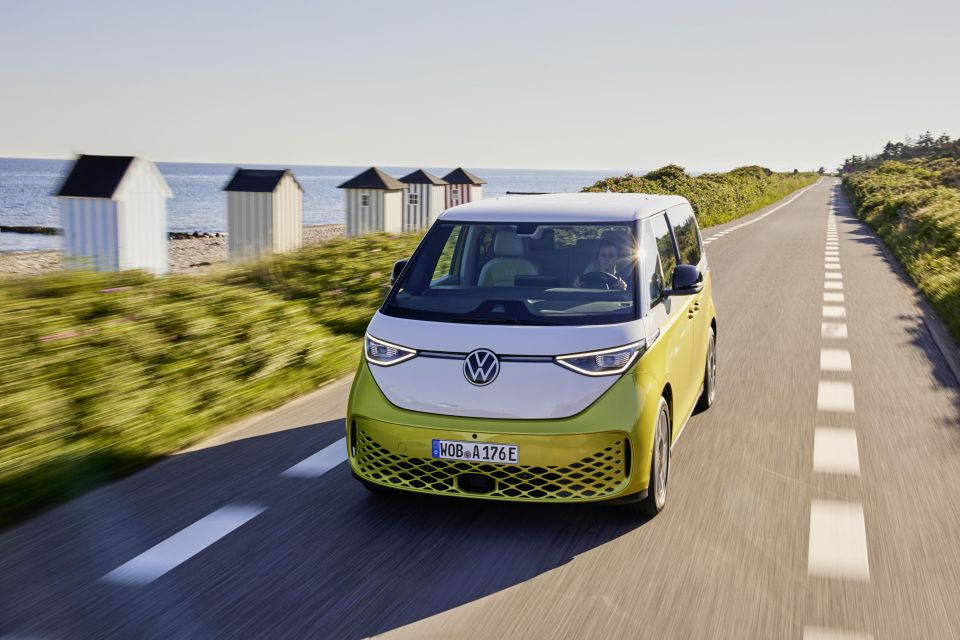
It’s out of the city, at higher speeds on the freeway and on the backroads, that you become aware the Buzz’s single 150kW e-motor has its work cut out pushing around a 2471kg brick on wheels. VW claims a 0-100km/h acceleration time of 10.2 seconds and a top speed of just 145km/h.
Of course, no-one expects a people mover to drive like a sports car, and yet puzzlingly, VW offers a Sport drive mode in the Buzz.
Though it apparently changes things like accelerator response and steering effort and stability control thresholds, its only noticeable effect is to increase the level of lift-off regeneration.
However, the increased lift-off regen helps disguise the weakest link in the Buzz’s dynamic armoury – its brakes.
Like all MEB cars, the ID. Buzz has drum brakes on the rear axle. Volkswagen claims that because much of the braking in the MEBs is done via regen, discs are not needed.

Drums also, say engineers, eliminate the need to have the pads periodically brush the rotors in wet weather, as most modern disc brake systems do, to ensure optimum performance, and there’s no chance of rust buildup on the rotors.
The problem is not the idea, but the execution. The brake pedal travel in the ID. Buzz is long and, worse, the feel is inconsistent.
There’s a noticeable step-change in retardation, presumably at the hand-off point between regen and mechanical braking when the rate of deceleration exceeds 0.3g.
The ID. Buzz is unquestionably best driven in a relaxed frame of mind. Sit back, enjoy the ride, the good seats, and the impressive all-round visibility.

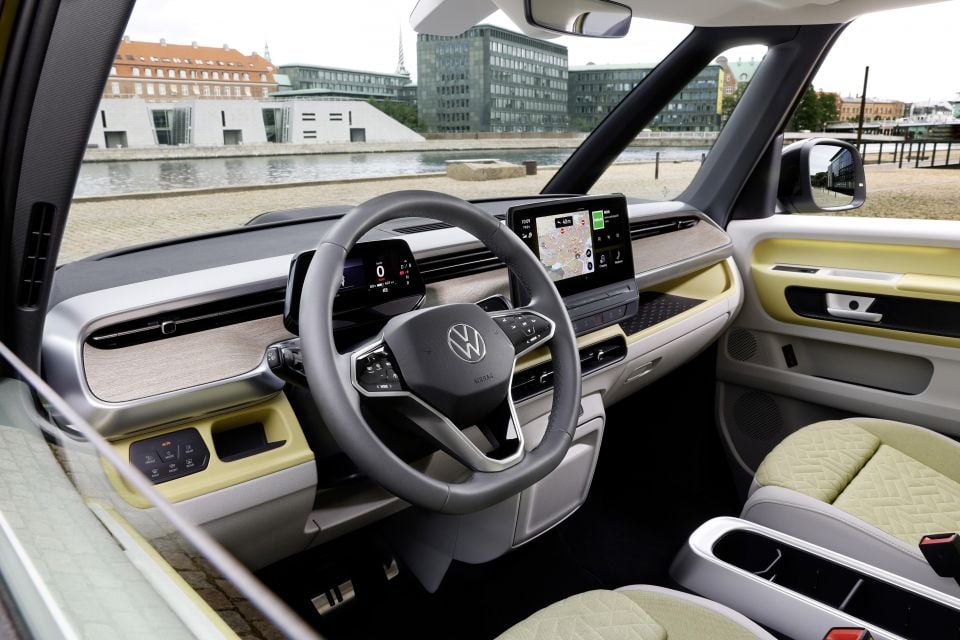
ID. Buzz Life highlights (UK market):
ID. Buzz Style adds:
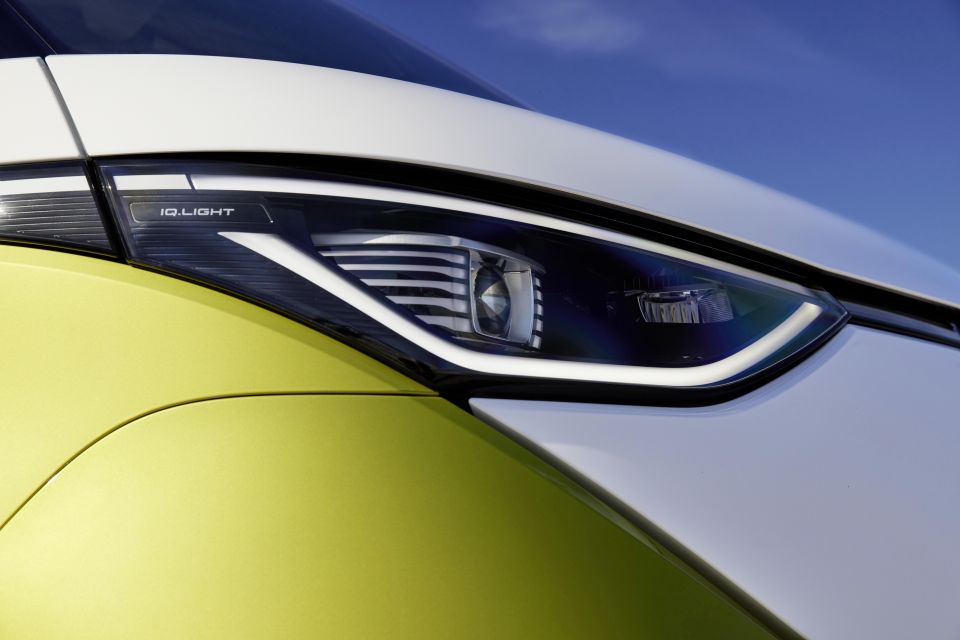
Where expert car reviews meet expert car buying – CarExpert gives you trusted advice, personalised service and real savings on your next new car.
The ID. Buzz has yet to be rated by Euro NCAP.
However, as all Volkswagen’s MEB-based electric vehicles, and the new T7 Multivan, have achieved five-star ratings, there’s no reason to expect the ID. Buzz will not also achieve Euro NCAP’s top score.
Standard safety features include:

All Volkswagens sold in Australia are covered by a five-year, unlimited kilometre warranty.
Volkswagen has yet to sell any EVs in Australia, however we would expect it to offer buyers incentives and benefits, such as subscriptions to public fast charging networks, similar to those offered by Audi for its e-tron models.
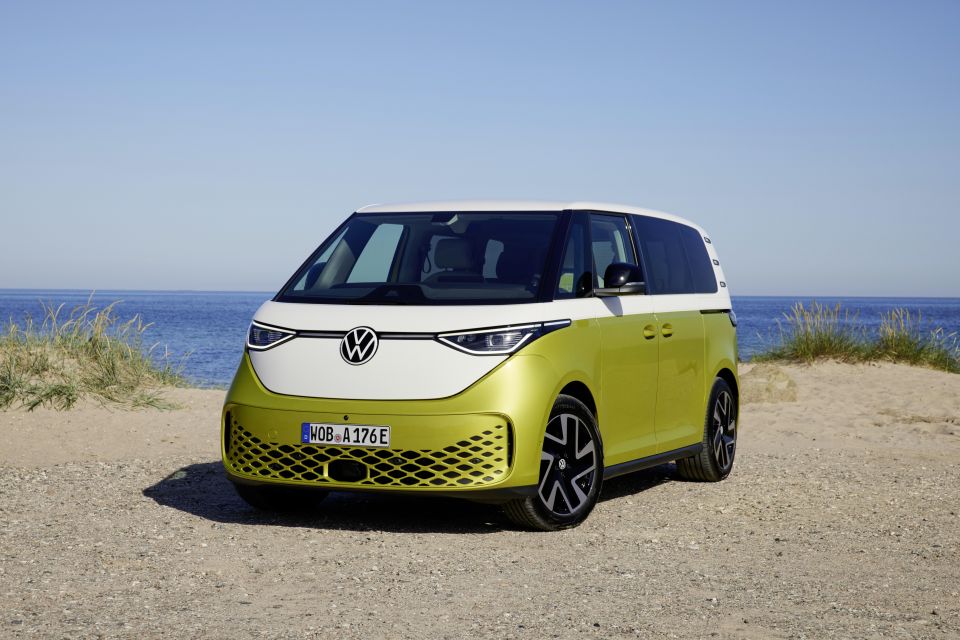
In design and styling terms the ID. Buzz is a hit, with just enough spirit of the iconic Microbus to make it stand out from the van crowd, providing you order one of the four optional two-tone paint schemes; white over yellow, orange, green or blue.
In a monochrome finish the Buzz doesn’t quite have the same retro flavour.
You’ll also want the interior styling package in addition to the two-tone paint, as this adds matching splashes of colour on the dash, doors, and seats.
The ID. Buzz doesn’t just look smart, it’s a practical too. It’s comfortable, manoeuvrable, appropriately sized electric vehicle that can effortlessly carry five people and their stuff – or, with the second row folded flat, just a whole lot of your own stuff.

But the Buzz needs brakes with better feel; Volkswagen’s user interface is still, despite software upgrades, clunkier than it should be; and the single-motor drivetrain needs more power to cope with the ID. Buzz’s mass.
The first two issues are software rather than hardware related, and VW sources confirm a power boost for the rear e-motor is on the way.
Despite these niggles, the ID. Buzz is a van that makes you smile, just like the old Microbus, which in truth had plenty of it’s own flaws.
While most compact vans struggle to be anything but appliances, there is a coolness and quirkiness, a charming mix of style and practicality to the ID. Buzz.
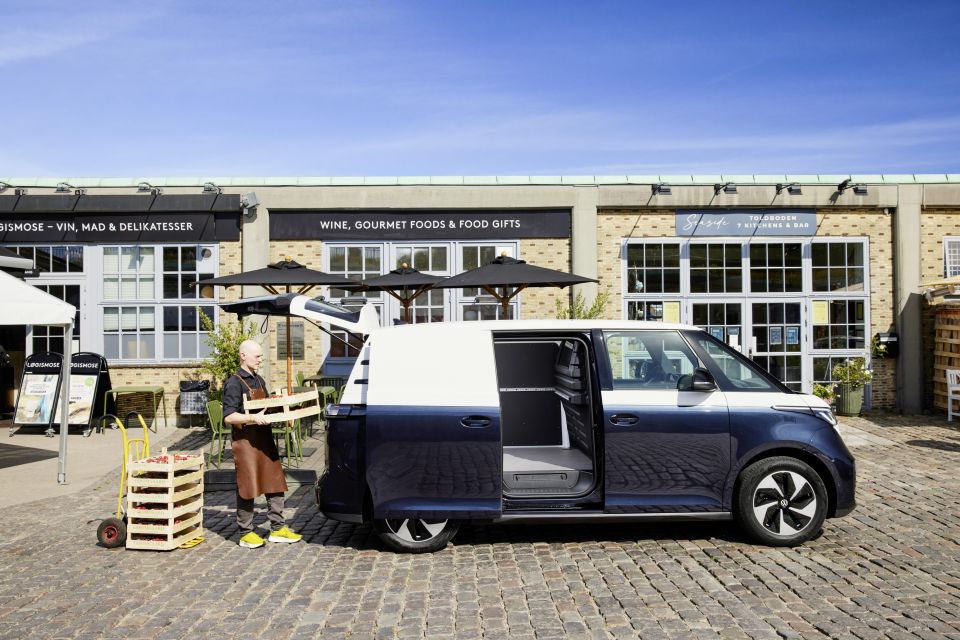
Click the images for the full gallery
Where expert car reviews meet expert car buying – CarExpert gives you trusted advice, personalised service and real savings on your next new car.


Matt Campbell
5 Days Ago


James Wong
4 Days Ago


Max Davies
3 Days Ago


Josh Nevett
2 Days Ago


Josh Nevett
1 Day Ago
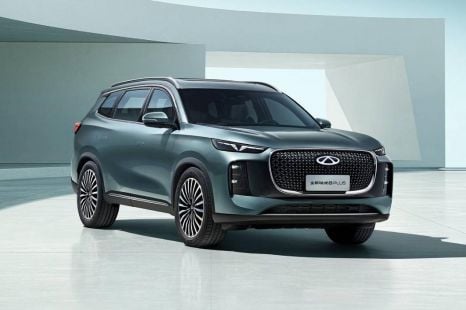

William Stopford
14 Hours Ago